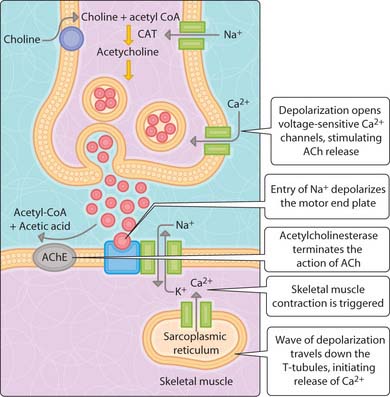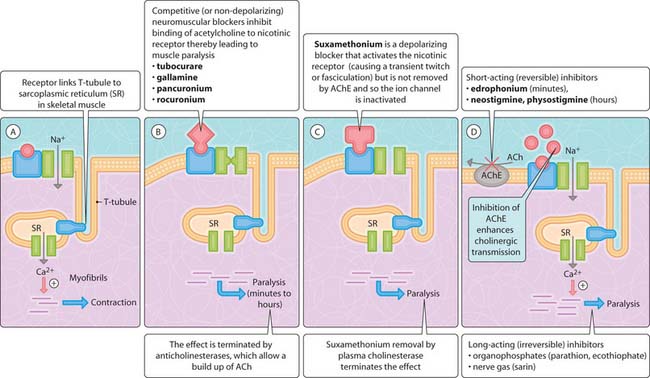8 Neuromuscular junction
Physiology of the neuromuscular junction
Skeletal (voluntary) muscle receives a rich supply of fast-conducting motor neurons containing acetylcholine in their terminals. Depolarization releases acetylcholine, which diffuses across the neuromuscular junction (NMJ); two molecules bind to the two α-subunits of the nicotinic receptor on the motor end-plate region, leading to depolarization of the motor end plate and contraction of skeletal muscle cells. Acetylcholine is also rapidly metabolized by acetycholinesterase into inactive choline and acetic acid; the choline is reincorporated into the terminals of the motor neurons and converted back to acetylcholine by the enzyme choline acetyltransferase (Fig. 3.8.1). The opening (approximately 1 ms) of the nicotinic receptor allows the entry of Na+ into the cell, resulting in a brief depolarization; this is known as the end plate potential. If this is of sufficient stimulus to reach threshold, the resultant action potential leads to the depolarization of adjacent skeletal muscle cells via depolarization of many other voltage-dependent sodium channels. This wave spreads over the muscle surface and is conducted within the interior of the fibre by invaginations (T-tubules) in the muscle cell. The action potential leads to the release of Ca2+ from the sarcoplasmic reticulum, which is in close proximity to the T-tubules, and ultimately triggers skeletal muscle contraction (Fig. 3.8.2).
< div class='tao-gold-member'>
Stay updated, free articles. Join our Telegram channel

Full access? Get Clinical Tree






